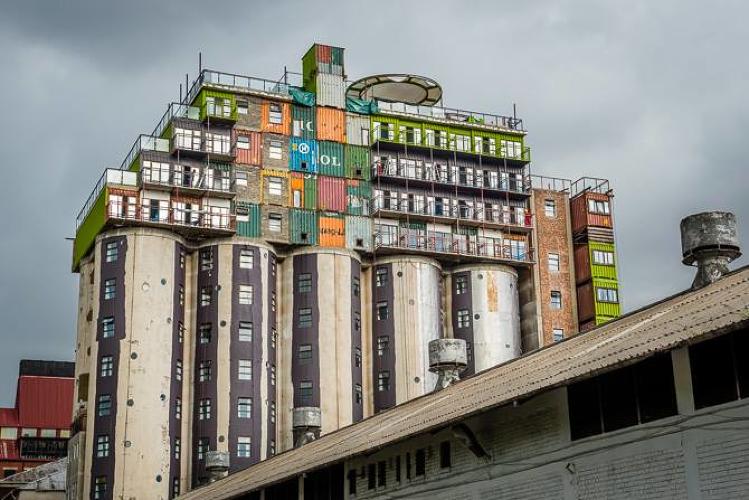In Johannesburg, South Africa, Citiq has re-purposed empty grain silos and shipping containers into university dorms. The silos were scheduled to be demolished until Citiq purchased the property and added shipping containers to make the 14-story building. In South Africa, student housing is in short supply; only 5% of university students live in official university housing. This development fills the void and helps students attain convenient and affordable housing while they are in school.
The composition of the building itself is green in that it repurposes existing silos rather than using new materials. The accommodations also include various energy-efficient components, including heat pumps and low-flow showerheads. While these two elements make the dorms less environmentally impactful than the typical building, Citiq notes that the design was made from a cost perspective, not a green one.
I think this is a great example of how sustainable ventures can often come from a desire to save money, rather than wanting to save the planet. Citiq was able to cut costs by tweaking an existing structure and reusing empty shipping containers, rather than purchasing new materials. Features like low-flow showerheads and heat pumps use less energy and thus, save on energy costs. Even though the environmental benefits were more of an afterthought and almost an unintended by-product of the project, it still sounds like a win-win-win situation to me where the developer, South African students, and the environment all benefit.
A similar building model is being used in northern Saskatchewan and Alberta to house the influx of workers in the area. The company responsible for repurposing shipping containers into living space, 3twenty Modular, even built an apartment complex for a Canadian airforce base in Alberta and is looking into housing for remote First Nations reserves.
These two examples are innovative and sustainable solutions to housing shortage and affordability problems. It could be particularly useful in remote areas or regions with an influx of temporary workers. In the case of 3twenty Modular, I think it was the right decision to market their product as durable, portable, and functional, rather than sustainable. It goes to show that organisations can be sustainable without marketing themselves as such.

This is a very interesting idea. Not only is this a great sustainable product in repurposing its use, but also great for the society. When the topic of affordable housing is on the table opponents will always cite cost as a factor in developing government housing, it being to expensive. Now with solutions like this the cost has been significantly diminished. Even for those that live in shanties they could very well be able to these containers, which provides for a significantly safer and sturdier home. It could even be applied to cities with exorbitantly high costs of living such as Vancouver. With new apartments offering similar square footage but double the price developers would be keen on access the viability of these containers.
Extremely compelling, thanks a lot!